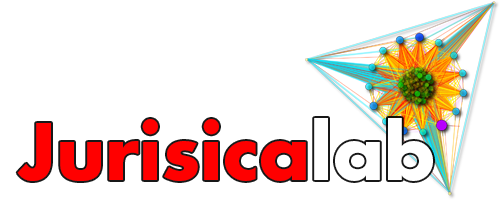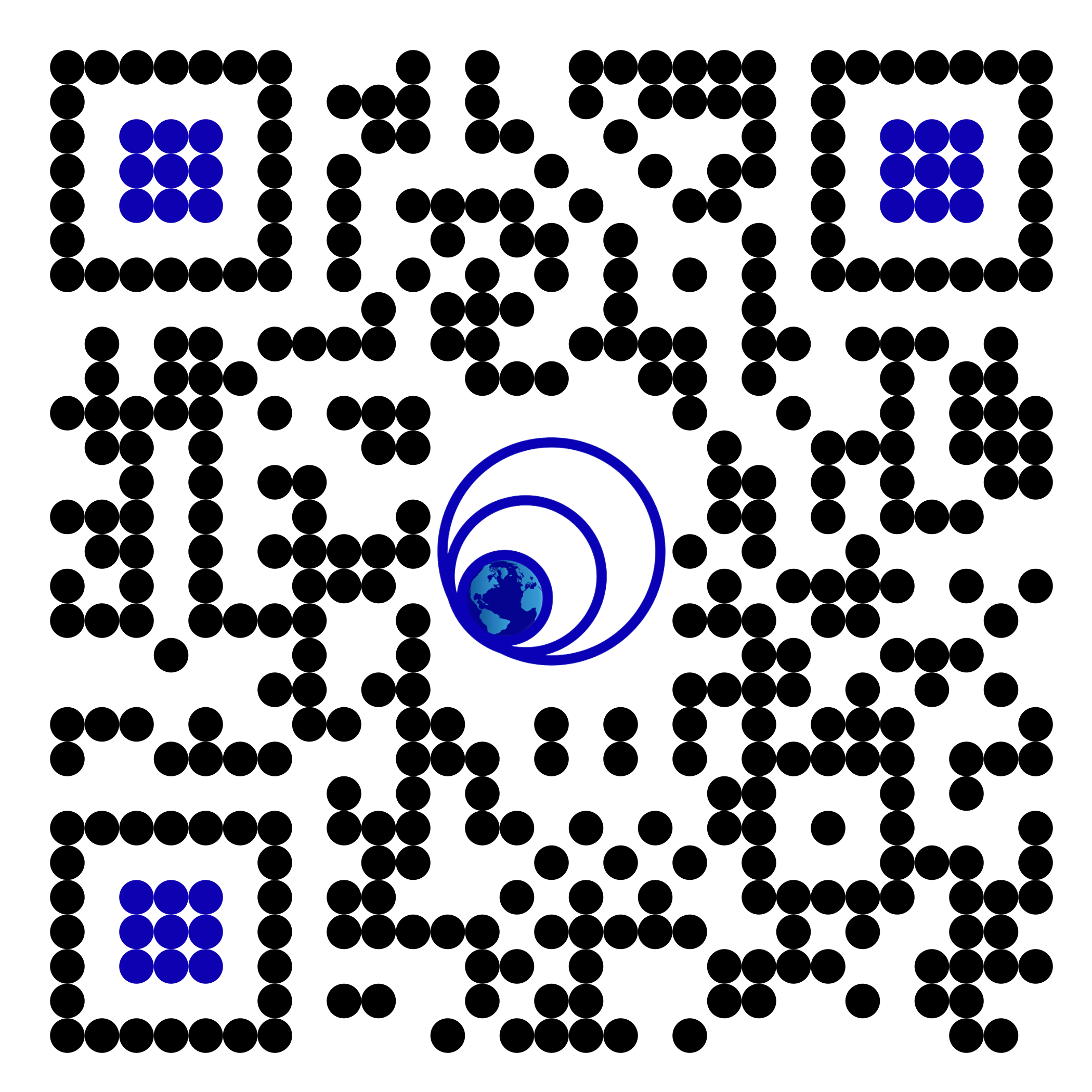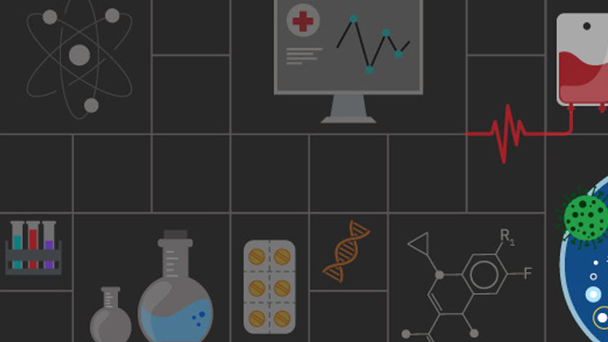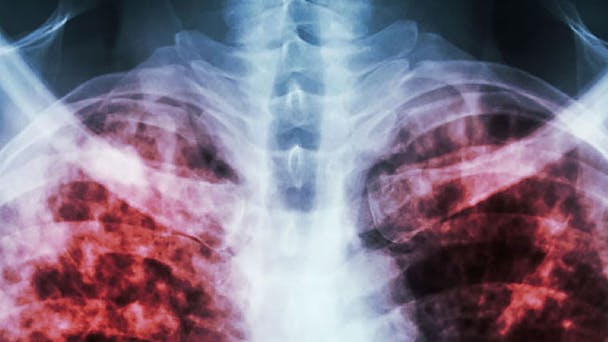

- Our Vision: A healthier world.
- Our Mission: Accelerating science by creating a supercomputer empowered by a global community of volunteers.
- “WCG continues to support open-source and opendata research and helps reduce computational time to empower scientists to address the world’s most pressing questions at no cost to the researchers”. Dr. Igor Jurisica
- “By its very nature, World Community Grid is a collaborative effort involving individuals and institutions from around the world working towards innovative advancements in science that benefit humanity. Distributive is proud to be a part of this mission.” Dr. Dan Desjardins, co-founder & CEO, Distributive Corp., Kingston, Ontario, Canada
- “This work has demonstrated the importance of the integration of computational and experimental approaches, as well as the potential of large-scale collaborative networks to advance drug discovery projects for neglected diseases and emerging viruses, despite the lack of available direct antiviral activity and cytoprotective effect data, that reflects on the assertiveness of the computational predictions.” Dr. Carolina Horta Andrade; Open Zika project
- “With the help of volunteers, partners, and institutions, the WCG will continue to grow as the world's largest volunteer-driven supercomputer, enabling seemingly impossible scientific research to come to life”.

World Community Grid (WCG) is a public, high performance computing platform available for open science/open data research that benefits humanity. It is a global, heterogeneous, distributed cloud infrastructure that runs on secure BOINC platform developed at Berkeley. Over the 19+ years of its operation, 812,104 volunteers with more than 7.66 million devices contributed over 2.55 million CPU years towards research on cancer, tuberculosis, COVID-19, HIV/AIDS, microbiome immunity, understanding genomes and protein structure, developing new materials, clean energy, ensuring sustainable water, understanding weather patterns in Africa, and other globally important projects.
WCG diminished computational bottlenecks for open science and increased research breakthroughs by using scalable yet sustainable computing. It brings together volunteers and researchers at the intersection of computational biology, open science, open data, and citizen science - four trends that are transforming the way research is conducted. WCG has supported 31 research projects to date, and enabled seemingly impossible scientific research to come to life. WCG condenses computational time and enables scientists to answer the world’s most pressing questions. Our research partners have published over 186 peer-reviewed papers in scientific journals. WCG is the biggest volunteer computing initiative devoted to science benefiting humanity, and is as powerful as some of the world's fastest supercomputers.
WCG was one of the first to use GPUs to accelerate scientific computation on the Help Conquer Cancer project, and in 2013, it also became one of the first major volunteer computing initiatives to enable mobile computing on Android smartphones and tablets.
History
WCG began in 2004 as a philanthropic initiative of IBM Corporate Social Responsibility, the corporate social responsibility and philanthropy division of IBM. Through Corporate Social Responsibility, IBM donated its technology and talent to address some of the world's most pressing social and environmental issues. WCG has been pioneering and an award-winning program, which has been recognized internationally with awards, including the Computerworld Data+ Editors’ Choice Award, Business in the Community Coffey International Award, and the Asian Forum on Corporate Social Responsibility's Asian CSR Award.
In 2021, IBM transferred the World Community Grid assets to Jurisica Lab at Krembil Research Institute, University Health Network (UHN) in Toronto, Canada. While sharing the goals and principles of WCG, we aim to expand the mission of citizen science, youth outreach and integrative computational biology. UHN has Canada’s largest hospital-based research program, comprising three major teaching hospitals (Toronto Western Hospital, Toronto General Hospital, Princess Margaret Cancer Centre) and their research insititutes, Toronto Rehabilitation Institute, and The Michener Institute of Education.
Dr. Igor Jurisica’s research is connected to the Toronto Western Hospital and the hospital’s research arm, the Krembil Research Institute; a non-profit academic biomedical research institute. Research within Krembil is focused on the development of diagnostics, treatments and management strategies in the following three programmatic areas:
- 1) arthritis and musculoskeletal system disorders, e.g., osteoarthritis, rheumatoid arthritis, systemic lupus erythematosus, and ankylosing spondylitis;
- 2) brain and chronic neurological/neurosurgical disorders, e.g., concussion and traumatic brain injury, Alzheimer's and Parkinson's diseases, stroke, epilepsy, spinal cord injuries, dementia, pain and depression;
- 3) vision and ophthalmologic disorders, e.g., glaucoma, macular degeneration, and retinopathy.



Mapping Cancer Markers aims to identify markers associated with various types of cancer. This will help detect cancer earlier and design more personalized cancer care.

Scientists at Scripps Research are using World Community Grid to help search for potential treatments for COVID-19, and to build open-source tools to help address future pandemics quickly and early.

95% of agriculture in Africa depends on rainfall. This project uses massive computing power, data from The Weather Company, and other data to provide more accurate rainfall forecasts

Since 2009, World Community Grid has been part of the fight against childhood cancer. This project continues that work by expanding the search for better treatments to more types of childhood cancer.

Tuberculosis killed 1.5 million people in 2014, making it one of the world's deadliest diseases. You can help researchers learn more about this disease and how to overcome it.

World Community Grid volunteers donated nearly 146,000 CPU years to the MIP. This effort enabled the team to predict the structure of almost 200,000 proteins, discover over 150 new protein shapes (folds), describe several previously unknown functions of protein structures, and nearly double the number of annotated proteins in the human gut microbiome.

From almost 404 million results generated by WCG, amounting to almost 93 thousand years of computation, 61 hits were prioritised for testing. Further tests identified 8 compounds as being able to protect the cells from death caused by the virus, while showing low cellular toxicity in liver and kidney derived cells.

The first phase of FightAIDS@Home made significant advances in HIV research. As the virus evolves, the research team used new analysis techniques to better identify promising anti-HIV drugs.

Ebola is a deadly virus that kills up to 90% of infected victims. WCG and the volunteers helped to find the most promising drug leads to fight the Ebola virus.

Uncovering Genome Mysteries expects to examine close to 200 million genes from a wide variety of life forms, such as seaweeds from Australian coastlines and microbes found in Amazon river samples.

The project studied the effects of human activity on a large watershed and gain deeper insights into what actions can lead to restoration, health and sustainability of this important water resource. The extensive computing power of WCG was used to perform millions of computer simulations to better understand the effects that result from a variety of human activity patterns in the Chesapeake Bay area.

The extensive computing power of WCG was used to perform computer simulations of the interactions between millions of chemical compounds and certain target proteins. This has helped find the most promising compounds that may lead to effective treatments for Schistosoma.

The aim of the project was to discover promising new drug candidates that could be developed into new drugs that cure drug resistant forms of malaria, by performing computer simulations of the interactions between millions of chemical compounds and certain target proteins, to predict their ability to eliminate malaria.

The mission of Drug Search for Leishmaniasis was to identify potential drug candidates that could possibly be developed into treatments for Leishmaniasis by running computer simulations of the interactions between millions of chemical compounds and certain target proteins.

The mission of Computing for Clean Water was to provide deeper insight on the molecular scale into the origins of the efficient flow of water through a novel class of filter materials. This insight will in turn guide future development of low-cost and more efficient water filters.

The mission of The Clean Energy Project was to find new materials for the next generation of solar cells and later, energy storage devices. By harnessing the immense power of WCG, researchers have calculated the electronic properties of hundreds of thousands of organic materials - thousands of times more than could ever be tested in a lab - and identified the most promising candidates for developing affordable solar energy technology.

The project's goals were to uncover novel drugs to cure dengue hemorrhagic fever, hepatitis C, West Nile encephalitis, and Yellow fever; diseases caused by the infection with viruses from the family Flaviviridae.

The project investigated protein-protein interactions for more than 2,200 proteins whose structures are known, with particular focus on those proteins that play a role in neuromuscular diseases. The database of information produced is helping researchers design molecules to inhibit or enhance binding of particular macromolecules, hopefully leading to better treatments for muscular dystrophy and other neuromuscular diseases.

The aimed to find new drugs that can stop the spread of an influenza infection in the body. The research specifically focused on the influenza strains that have become drug resistant as well as new strains that are appearing, accelerating the efforts to develop treatments that would be useful in managing seasonal influenza outbreaks, and future influenza epidemics and even pandemics.

The mission of the Help Fight Childhood Cancer project has been to find drugs that can disable three particular proteins associated with neuroblastoma, one of the most frequently occurring solid tumors in children. Identifying these drugs could potentially make the disease much more curable when combined with chemotherapy treatment.

The mission of the Clean Energy Project was to find new materials for the next generation of solar cells and later, energy storage devices.

The objective of this project was to predict the structure of proteins of major strains of rice, which in turn will help farmers breed better rice strains with higher crop yields, promote greater disease and pest resistance, and utilize a full range of bioavailable nutrients that can benefit people around the world, especially in regions where hunger is a critical concern.

The main goal of the project was to improve the results of protein X-ray crystallography in order to increase understanding of cancer and its treatment.

The mission of AfricanClimate@Home was to develop more accurate climate models of specific regions in Africa. This will serve as a basis for understanding how the climate will change in the future so that measures designed to alleviate the adverse effects of climate change can be implemented.

The mission of the project was to identify promising drug leads to combat the Dengue, Hepatitis C, West Nile, Yellow Fever, and other related viruses. The extensive computing power of World Community Grid was used to complete the structure-based drug discovery calculations required to identify these leads.

This project focused on investigating protein-protein, protein-DNA and protein-ligand interactions for the 10,000 proteins whose structures are known, with particular focus on those proteins that play a role in neuromuscular diseases. The database of information produced will help researchers design molecules to inhibit or enhance binding of particular macromolecules, hopefully leading to better treatments for muscular dystrophy and other neuromuscular diseases.

WThe project focused on comparing genomic information to improve the quality and interpretation of biological data and our understanding of biological systems, host-pathogen and environmental interactions. This information can play a critical role in the development of better drugs and vaccines, and improved diagnostic procedures.

The project was examining tissue microarrays to determine how to improve the treatment of cancer with earlier and more targeted diagnostic tools.

Human Proteome Folding Phase 2 (HPF2) continued where the first phase left off. The two main objectives of the project were to: 1) obtain higher resolution structures for specific human proteins and pathogen proteins and 2) further explore the limits of protein structure prediction by further developing Rosetta software structure prediction.

FightAIDS@Home focused on using computation methods to identify candidate drugs that have the right shape and chemical characteristics to block HIV protease.

The Human Proteome Folding project has generate data for predicting the shape of a very large number of human proteins. These predictions give scientists the clues they need to identify the biological functions of individual proteins within the human body. With an understanding of how each protein affects human health, scientists can develop new cures for human diseases such as cancer, HIV/AIDS, SARS, malaria, arthritis and many others .
- Cao, Wei, Jin Wang and Ming Ma. Carbon nanostructure based mechano-nanofluidics. Journal of Micromechanics and Microengineering (2018). DOI: 10.1088/1361-6439/aaa782.
- Ma, Ming, François Grey, Luming Shen, Michael Urbakh, Shuai Wu, Jefferson Zhe Liu, Yilun Liu and Quanshui Zheng. Water transport inside carbon nanotubes mediated by phonon-induced oscillating friction. Nature
- Nanotechnology (2015). DOI: 10.1038/nnano.2015.134.
- Ma, Ming D., Luming Shen, John Sheridan, Jefferson Zhe Liu, Chao Chen and Quanshui Zheng. Friction of water slipping in carbon nanotubes. Physical Review E (2011). DOI: 10.1103/PhysRevE.83.036316.
- Viswanathan, Usha, Suzanne M. Tomlinson, John M. Fonner, Stephen A. Mock and Stanley J. Watowich. Identification of a novel inhibitor of dengue virus protease through use of a virtual screening drug discovery Web portal. Journal of Chemical Information and Modeling (2014). DOI: 10.1021/ci500531r.
- Tomlinson, S. M., R. D. Malmstrom and S. J. Watowich. New Approaches to Structure-Based Discovery of Dengue Protease Inhibitors. Infectious Disorders - Drug Targets (2009). DOI: 10.2174/1871526510909030327.
- Ochoa, Rodrigo, Stanley J. Watowich, Andrés Flórez, Carol V. Mesa, Sara M. Robledo and Carlos Muskus. Drug search for leishmaniasis: a virtual screening approach by grid computing. Journal of Computer-Aided Molecular Design (2016). DOI: 10.1007/s10822-016-9921-4.
- Flórez, Andrés F., Stanley Watowich, Carlos Muskus, Andrés F. Flórez, Stanley Watowich and Carlos Muskus. Current Advances in Computational Strategies for Drug Discovery in Leishmaniasis. (2012).
- Goodsell, David S., Michel F. Sanner, Arthur J. Olson and Stefano Forli. The AutoDock suite at 30. Protein Science (2021). DOI: 10.1002/pro.3934.
- Craveur, Pierrick, Anna T. Gres, Karen A. Kirby et al. Novel Intersubunit Interaction Critical for HIV-1 Core Assembly Defines a Potentially Targetable Inhibitor Binding Pocket. mBio (2019). DOI: 10.1128/mBio.02858-18.
- Xia, Junchao, William Flynn, Emilio Gallicchio, Keith Uplinger, Jonathan D. Armstrong, Stefano Forli, Arthur J. Olson and Ronald M. Levy. Massive-Scale Binding Free Energy Simulations of HIV Integrase Complexes Using Asynchronous Replica Exchange Framework Implemented on the IBM WCG Distributed Network. Journal of Chemical Information and Modeling (2019). DOI: 10.1021/acs.jcim.8b00817.
- Forli, Stefano and Arthur J. Olson. Computational Challenges of Structure-Based Approaches Applied to HIV. The Future of HIV-1 Therapeutics (2015).
- Xia, Junchao, William F. Flynn, Emilio Gallicchio, Bin W. Zhang, Peng He, Zhiqiang Tan and Ronald M. Levy. Large-scale asynchronous and distributed multidimensional replica exchange molecular simulations and efficiency analysis. Journal of Computational Chemistry (2015). DOI: 10.1002/jcc.23996.
- Gallicchio, Emilio, Junchao Xia, William F. Flynn, Baofeng Zhang, Sade Samlalsingh, Ahmet Mentes and Ronald M. Levy. Asynchronous replica exchange software for grid and heterogeneous computing. Computer Physics Communications (2015). DOI: 10.1016/j.cpc.2015.06.010.
- Perryman, Alexander L., Daniel N. Santiago, Stefano Forli, Diogo Santos-Martins and Arthur J. Olson. Virtual screening with AutoDock Vina and the common pharmacophore engine of a low diversity library of fragments and hits against the three allosteric sites of HIV integrase: participation in the SAMPL4 protein–ligand binding challenge. Journal of Computer-Aided Molecular Design (2014). DOI: 10.1007/s10822-014-9709-3.
- Perryman, Alexander L., Qing Zhang, Holly H. Soutter, Robin Rosenfeld, Duncan E. McRee, Arthur J. Olson, John E. Elder and C. David Stout. Fragment-Based Screen against HIV Protease. Chemical Biology & Drug Design (2010). DOI: 10.1111/j.1747-0285.2009.00943.x.
- Perryman, Alex L., Stefano Forli, Garrett M. Morris et al. A Dynamic Model of HIV Integrase Inhibition and Drug Resistance. Journal of Molecular Biology (2010). DOI: 10.1016/j.jmb.2010.01.033.
- Cosconati, Sandro, Stefano Forli, Alex L Perryman, Rodney Harris, David S Goodsell and Arthur J Olson. Virtual Screening with AutoDock: Theory and Practice. Expert Opinion on Drug Discovery (2010). DOI: 10.1517/17460441.2010.484460.
- Morris, Garrett M., Ruth Huey, William Lindstrom, Michel F. Sanner, Richard K. Belew, David S. Goodsell and Arthur J. Olson. AutoDock4 and AutoDockTools4: Automated docking with selective receptor flexibility. Journal of Computational Chemistry (2009). DOI: 10.1002/jcc.21256.
- Chang, Max W., William Lindstrom, Arthur J. Olson and Richard K. Belew. Analysis of HIV Wild-Type and Mutant Structures via in Silico Docking against Diverse Ligand Libraries. Journal of Chemical Information and Modeling (2007). DOI: 10.1021/ci700044s.
- Perryman, Alexander L., Weixuan Yu, Xin Wang et al. A Virtual Screen Discovers Novel, Fragment-Sized Inhibitors of Mycobacterium tuberculosis InhA. Journal of Chemical Information and Modeling (2015). DOI: 10.1021/ci500672v.
- Lifschitz, Sérgio, Carlos Juliano M. Viana, Cristian Tristão, Marcos Catanho, Wim M. Degrave, Antonio Basílio de Miranda, Márcia Bezerra and Thomas D. Otto. Design and Implementation of ProteinWorldDB. Advances in Bioinformatics and Computational Biology (2012).
- Otto, Thomas Dan, Marcos Catanho, Cristian Tristão et al. ProteinWorldDB: querying radical pairwise alignments among protein sets from complete genomes. Bioinformatics (2010). DOI: 10.1093/bioinformatics/btq011.
- Kotseruba, Yulia, Christian A. Cumbaa and Igor Jurisica. High-throughput protein crystallization on the World Community Grid and the GPU. Journal of Physics: Conference Series (2012). DOI: 10.1088/1742-6596/341/1/012027.
- Cumbaa, Christian A. and Igor Jurisica. Protein crystallization analysis on the World Community Grid. Journal of Structural and Functional Genomics (2010). DOI: 10.1007/s10969-009-9076-9.
- Snell, Edward H., Angela M. Lauricella, Stephen A. Potter et al. Establishing a training set through the visual analysis of crystallization trials. Part II: crystal examples. Acta Crystallographica Section D: Biological Crystallography (2008). DOI: 10.1107/S0907444908028059.
- Snell, Edward H., Joseph R. Luft, Stephen A. Potter et al. Establishing a training set through the visual analysis of crystallization trials. Part I: 150000 images. Acta Crystallographica Section D: Biological Crystallography (2008). DOI: 10.1107/S0907444908028047.
- Dequeker, Chloé, Elodie Laine and Alessandra Carbone. Decrypting protein surfaces by combining evolution, geometry, and molecular docking. Proteins: Structure, Function, and Bioinformatics (2019). DOI: 10.1002/prot.25757.
- Lagarde, Nathalie, Alessandra Carbone and Sophie Sacquin-Mora. Hidden partners: Using cross-docking calculations to predict binding sites for proteins with multiple interactions. Proteins: Structure, Function, and Bioinformatics (2018). DOI: 10.1002/prot.25506.
- Laine, Elodie and Alessandra Carbone. Protein social behavior makes a stronger signal for partner identification than surface geometry. Proteins: Structure, Function, and Bioinformatics (2017). DOI: 10.1002/prot.25206.
- Vamparys, Lydie, Benoist Laurent, Alessandra Carbone and Sophie Sacquin-Mora. Great interactions: How binding incorrect partners can teach us about protein recognition and function. Proteins: Structure, Function, and Bioinformatics (2016). DOI: 10.1002/prot.25086.
- Lopes, Anne, Sophie Sacquin-Mora, Viktoriya Dimitrova, Elodie Laine, Yann Ponty and Alessandra Carbone. Protein-Protein Interactions in a Crowded Environment: An Analysis via Cross-Docking Simulations and Evolutionary Information. PLOS Computational Biology (2013). DOI: 10.1371/journal.pcbi.1003369.
- Bertis, Viktors, Raphaël Bolze, Frédéric Desprez and Kevin Reed. From Dedicated Grid to Volunteer Grid: Large Scale Execution of a Bioinformatics Application. Journal of Grid Computing (2009). DOI: 10.1007/s10723-009-9130-7.
- Engelen, Stefan, Ladislas A. Trojan, Sophie Sacquin-Mora, Richard Lavery and Alessandra Carbone. Joint Evolutionary Trees: A Large-Scale Method To Predict Protein Interfaces Based on Sequence Sampling. PLOS Computational Biology (2009). DOI: 10.1371/journal.pcbi.1000267.
- Sacquin-Mora, Sophie, Alessandra Carbone and Richard Lavery. Identification of Protein Interaction Partners and Protein–Protein Interaction Sites. Journal of Molecular Biology (2008). DOI: 10.1016/j.jmb.2008.08.002.
- Foran, David J, Lin Yang, Wenjin Chen et al. ImageMiner: a software system for comparative analysis of tissue microarrays using content-based image retrieval, high-performance computing, and grid technology. Journal of the American Medical Informatics Association (2011). DOI: 10.1136/amiajnl-2011-000170.
- Wang, Fusheng. Grid-Enabled, High-performance Microscopy Image Analysis. (2010).
- Lin Yang, Wenjin Chen, P. Meer, G. Salaru, L.A. Goodell, V. Berstis and D.J. Foran. Virtual Microscopy and Grid-Enabled Decision Support for Large-Scale Analysis of Imaged Pathology Specimens. IEEE Transactions on Information Technology in Biomedicine (2009). DOI: 10.1109/TITB.2009.2020159.
- Lin Yang, O. Tuzel, Wenjin Chen, P. Meer, G. Salaru, L.A. Goodell and D.J. Foran. PathMiner: A Web-Based Tool for Computer-Assisted Diagnostics in Pathology. IEEE Transactions on Information Technology in Biomedicine (2009). DOI: 10.1109/TITB.2008.2008801.
- DiPaola, Robert S., Dmitri Dvorzhinski, Anu Thalasila et al. Therapeutic starvation and autophagy in prostate cancer: A new paradigm for targeting metabolism in cancer therapy. The Prostate (2008). DOI: 10.1002/pros.20837.
- Fukuda, Mayu, Atsushi Takatori, Yohko Nakamura, Akiko Suganami, Tyuji Hoshino, Yutaka Tamura and Akira Nakagawara. Effects of novel small compounds targeting TrkB on neuronal cell survival and depression-like behavior. Neurochemistry International (2016). DOI: 10.1016/j.neuint.2016.04.017.
- Nakamura, Yohko, Akiko Suganami, Mayu Fukuda et al. Identification of novel candidate compounds targeting TrkB to induce apoptosis in neuroblastoma. Cancer Medicine (2014). DOI: 10.1002/cam4.175.
- Groenewald, Wilma, Ricardo A. Parra-Cruz, Christof M. Jäger and Anna K. Croft. Revealing solvent-dependent folding behavior of mycolic acids from Mycobacterium tuberculosis by advanced simulation analysis. Journal of Molecular Modeling (2019). DOI: 10.1007/s00894-019-3943-5.
- Baltz, Alexander G., Mathias Munschauer, Björn Schwanhäusser et al. The mRNA-Bound Proteome and Its Global Occupancy Profile on Protein-Coding Transcripts. Molecular Cell (2012). DOI: 10.1016/j.molcel.2012.05.021.
- Pentony, M. M., P. Winters, D. Penfold-Brown, K. Drew, A. Narechania, R. DeSalle, R. Bonneau and M. D. Purugganan. The Plant Proteome Folding Project: Structure and Positive Selection in Plant Protein Families. Genome Biology and Evolution (2012). DOI: 10.1093/gbe/evs015.
- Drew, Kevin, Patrick Winters, Glenn L. Butterfoss et al. The Proteome Folding Project: Proteome-scale prediction of structure and function. Genome Research (2011). DOI: 10.1101/gr.121475.111.
- Boxem, Mike, Zoltan Maliga, Niels Klitgord et al. A Protein Domain-Based Interactome Network for C. elegans Early Embryogenesis. Cell (2008). DOI: 10.1016/j.cell.2008.07.009.
- Bonneau, Richard, Marc T. Facciotti, David J. Reiss et al. A Predictive Model for Transcriptional Control of Physiology in a Free Living Cell. Cell (2007). DOI: 10.1016/j.cell.2007.10.053.
- Malmström, Lars, Michael Riffle, Charlie E. M. Strauss, Dylan Chivian, Trisha N. Davis, Richard Bonneau and David Baker. Superfamily assignments for the yeast proteome through integration of structure prediction with the gene ontology. PLoS biology (2007). DOI: 10.1371/journal.pbio.0050076.
- Andersen-Nissen, Erica, Kelly D. Smith, Richard Bonneau, Roland K. Strong and Alan Aderem. A conserved surface on Toll-like receptor 5 recognizes bacterial flagellin. Journal of Experimental Medicine (2007). DOI: 10.1084/jem.20061400.
- Avila-Campillo, Iliana, Kevin Drew, John Lin, David J. Reiss and Richard Bonneau. BioNetBuilder: automatic integration of biological networks. Bioinformatics (2007). DOI: 10.1093/bioinformatics/btl604.
- vMalmström, Lars. Genome-wide structural and functional protein characterization by ab initio protein structure prediction. Report / Department of Electrical Measurements. Lund Institute of Technology (2005).
- Pastrello C, Kotlyar M, Abovsky M, Lu R, Jurisica I. PathDIP 5: improving coverage and making enrichment analysis more biologically meaningful. Nucleic Acids Res, 52(D1):D663-D671, 2024.
- Wong SWH, Pastrello C, Kotlyar M, Faloutsos C, Jurisica I. USNAP: fast unique dense region detection and its application to lung cancer. Bioinformatics. 39(8):btad477, 2023.
- van Gogh M, Glaus Garzon JF, Sahin D, Knopfova L, Benes P, Boyman O, Jurisica I, Borsig L. Tumor cell-intrinsic c-Myb upregulation stimulates antitumor immunity in a murine colorectal cancer model, Cancer Immunol Res, CIR-22-0912, 2023. doi: 10.1158/2326-6066.CIR-22-0912.
- D'Angelo E, Pastrello C, Biccari A, Marangio A, Sensi F, Crotti S, Fassan M, Jurisica I, Pucciarelli S, Agostini M. An integrated multiomics analysis of rectal cancer patients identified POU2F3 as a putative druggable target and entinostat as a cytotoxic enhancer of 5-fluorouracil, Int J Cancer, 153(2):437-449, 2023.
- Houschild AC, Pastrello C, Ekaputeri GKA, Bethune-Waddell D, Abovsky M, Ahmed Z, Kotlyar M Lu R, Jurisica I. MirDIP 5.2: tissue context annotation and novel microRNA curation, Nuncl Acids Res, 51(D1):D217-D225, 2023.
- Pathmanathan S, Yao Z, Coelho P, Valla R, Drecun L, Benz C, Snider J, Saraon P, Grozavu I, Kotlyar M, Jurisica I, Park M, Stagljar I. B cell linker protein (BLNK) is a regulator of Met receptor signaling and trafficking in non-small cell lung cancer, iScience, 25(11):105419, 2022.
- Agapito G, Niu Y, Pastrello C, Jurisica I. Pathway integration and annotation: building a puzzle with non-matching pieces and no picture to follow, Briefings in Bioinformatics, 23(5):bbac368, 2022.
- Pastrello C, Abovsky M, Lu R, Ahmed Z, Kotlyar M, Veillette C, Jurisica I, Osteoarthritis Data Integration Portal (OsteoDIP): A web-based gene and non-coding RNA expression database, Osteoarthritis and Cartilage Open, 4(1): 100237, 2022.
- Tokar T, Pastrello C, Abovsky M, Rahmati S, Jurisica I. miRAnno-network-based functional microRNA annotation, Bioinformatics, 38(2): 592-593, 2022.
- Kotlyar, M., Pastrello, C., Ahmed, Z., Chee, J., Varyova, Z., Jurisica, I., IID 2021: Towards context-specific protein interaction analyses by increased coverage, enhanced annotation and enrichment analysis. Nucl Acids Res, 50(D1):D640-D647, 2022. doi: 10.1093/nar/gkab1034.
- Bhat M, Pasini E, Pastrello C, Angeli M, Baciu C, Abovsky M, Coffee A, Adeyi O, Kotlyar M, Jurisica I, Estrogen Receptor 1 Inhibition of Wnt/Beta-catenin Signaling Contributes to Sex Differences in Hepatocarcinogenesis, Frontiers in Oncology, section Molecular and Cellular Oncology, 11:777834. doi: 10.3389/fonc.2021.777834. eCollection 2021.
- Cohn DE, Barros-Filho MC, Minatel BC, Pewarchuk ME, Marshall EA, Vucic EA, Sage AP, Telkar N, Stewart GL, Jurisica I, Reis PP, Robinson WP, Lam WL. Share, Reactivation of Multiple Fetal miRNAs in Lung Adenocarcinoma, Cancers, 13(11):2686, 2021.
- Bhat, M. Elisa Pasini, Chiara Pastrello, Sarah Rahmati, Marc Angeli, Max Kotlyar, Anand Ghanekar and Igor Jurisica, Integrative Analysis of Layers of Data in Hepatocellular Carcinoma Reveals Pathway Dependencies, World J Hepatology, 13(1):94-108, 2021.
- Porras P, Barrera E, Bridge A, Del-Toro N, Cesareni G, Duesbury M, Hermjakob H, Iannuccelli M, Jurisica I, Kotlyar M, Licata L, Lovering RC, Lynn DJ, Meldal B, Nanduri B, Paneerselvam K, Panni S, Pastrello C, Pellegrini M, Perfetto L, Rahimzadeh N, Ratan P, Ricard-Blum S, Salwinski L, Shirodkar G, Shrivastava A, Orchard S. Towards a unified open access dataset of molecular interactions. Nat Commun. 11(1):6144, 2020.
- Glaus Garzon JF, Pastrello C, Jurisica I, Hottiger MO, Wenger RH, Borsig L. Tumor cell endogenous HIF-1α activity induces aberrant angiogenesis and interacts with TRAF6 pathway required for colorectal cancer development. Neoplasia. 22(12):745-758, 2020.
- Yao Z, Aboualizadeh F, Akula I, Snider J, Tang P, Kotlyar M, Jurisica I, Stagljar I. Split Intein-Mediated Protein Ligation, a Novel Method for Detecting Protein-Protein Interactions and Their Inhibition, Nat Commun, 11(1):2440, 2020.
- Pinheiro M, Lupinacci FCS, Santiago KM, Drigo SA, Marchi FA, Fonseca-Alves CE, Andrade SCDS, Aagaard MM, Basso TR, Dos Reis MB, Villacis RAR, Roffa M, Hajj GNM, Jurisica I, Kowalski LP, Achatz MI, Rogatto SR. Cancers (Basel), 12(5):E1289, 2020. doi: 10.3390/cancers12051289.
- Reis PP, Tokar T, Goswami RS, Xuan Y, Sukhai M, Seneda AL, Moz LES, Perez-Ordonez B, Simpson C, Goldstein D, Brown D, Gilbert R, Gullane P, Irish J, Jurisica I, Kamel-Reid S. A 4-gene signature from histologically normal surgical margins predicts local recurrence in patients with oral carcinoma: clinical validation, Scientific Reports, 10(1):1713, 2020. doi: 10.1038/s41598-020-58688-y.
- Tokar, T., Pastrello, C., Jurisica, I. GSOAP: A tool for visualization of gene set over-representation analysis, Bioinformatics, Bioinformatics, 36(9):2923-2925, 2020. doi: 10.1093/bioinformatics/btaa001
- Rahmati R, Abovsky M, Pastrello C, Kotlyar M, Lu R, Cumbaa CA, Rahman P, Chandran V, Jurisica I, pathDIP 4: an extended pathway annotations and enrichment analysis resource for human, model organisms and domesticated species, Nucl Acids Res, 48(D1): D479–D488, 2020, https://doi.org/10.1093/nar/gkz989
- Kennedy, S., Jarboui, M-A, Srihari, S, Raso, C, Bryan, K, Dernayka, L, Charitou. T, Bernal-Llinares, M, Herrera-Montavez, C, Krstic, A, Matallanas, D, Kotlyar, M, Jurisica, I, Curak, J, Wong, V, Stagljar, I, LeBihan, T, Imrie, L, Pillai, P, Lynn, M, Fasterius, E, Szigyarto, C. A-K, Breen, J, Kiel, C, Serrano, L, Rauch, N, Rukhlenko, O, Kholodenko, B, Iglesias-Martinez, L, Ryan, C, Pilkington, R, Cammareri, P, Sansom, O, Shave, S, Auer, M, Horn, N, Klose, F, Ueffing, M, Boldt, K, Lynn, D, Kolch, W, Extensive Rewiring of the EGFR Network in Colorectal Cancer Cells Expressing Transforming Levels of KRASG13D, Nat Commun, 11(1):499, 2020. doi: 10.1038/s41467-019-14224-9
- Enfield, K.S.S., Marshall, E.A., Anderson, C., Ng, K.W., Rahmati, S, Xu, Z. Fuller, M., Milne, K., Lu, D., Shi, R., Rowbotham, D. A., Becker-Santos, D.D., Johnson, F.D., English, J.C., MacAulay, C.E., Lam, S., Lockwood, W.W., Chari, R., Karsan, A., Jurisica, I., Lam, W.L., Epithelial tumor suppressor ELF3 is a lineage-specific amplified oncogene in lung adenocarcinoma, Nat Commun, 10(1):5438, 2019. doi:10.1038/s41467-019-13295-y
- Monette A, Bergeron D, Ben Amor A, Meunier L, Caron C, Mes-Masson AM, Kchir N, Hamzaoui K, Jurisica I, Lapointe R. Immune-enrichment of non-small cell lung cancer baseline biopsies for multiplex profiling define prognostic immune checkpoint combinations for patient stratification, J Immunother Cancer, 7(1):86, 2019. doi: 10.1186/s40425-019-0544-x
- Monette A, Morou A, Al-Banna NA, Rousseau L, Lattouf JB, Rahmati S, Tokar T, Routy JP, Cailhier JF, Kaufmann DE, Jurisica I, Lapointe R. Failed immune responses across multiple pathologies share pan-tumor and circulating lymphocytic targets, J Clin Invest, 2019 Mar 26;130. pii: 125301. doi: 10.1172/JCI125301
- Kaufmann KB, Garcia-Prat L, Liu Q, Ng SWK, Takayanagi SI, Mitchell A, Wienholds E, van Galen P, Cumbaa CA, Tsay MJ, Pastrello C, Wagenblast E, Krivdova G, Minden MD, Lechman ER, Zandi S, Jurisica I, Wang JCY, Xie SZ, Dick JE. A stemness screen reveals C3orf54/INKA1 as a promoter of human leukemia stem cell latency, Blood, 133(20):2198-2211, 2019. doi: 10.1182/blood-2018-10-881441.
- Mandilaras, V, Garg, S, Cabanero, M, Tan, Q, Pastrello, C, Burnier, J, Karakasis, K, Wang, L, Dhani, NC, Butler, MO, Bedard, PL, Siu, LL, Clarke, B, Shaw, PA, Stockley, T, Jurisica, I, Oza, AM. TP53 mutations in high grade serous ovarian cancer and impact on clinical outcomes: a comparison of next generation sequencing and bioinformatics analyses. Int J Gyn Cancer, Jan 18. pii: ijgc-2018-000087. doi: 10.1136/ijgc-2018-000087.
- del Toro N, Duesbury M, Koch M, Perfetto L, Shrivastava A, Ochoa D, Wagih O, Piñero J, Kotlyar M, Pastrello C, Beltrao P, Furlong LI, Jurisica I, Hermjakob H, Orchard S, Porras P. Capturing variation impact on molecular interactions in the IMEx Consortium mutations data set." Nat Commun, 10(1): 10, 2019.
- Li L, Guturi KKN, Gautreau B, Patel PS, Saad A, Morii M, Mateo F, Palomero L, Barbour H, Gomez A, Ng D, Kotlyar M, Pastrello C, Jackson HW, Khokha R, Jurisica I, Affar EB, Raught B, Sanchez O, Alaoui-Jamali M, Pujana MA, Hakem A, Hakem R., Ubiquitin ligase RNF8 suppresses Notch signaling to regulate mammary development and tumorigenesis, J Clin Invest, 128(10):4525-4542, 2018. doi: 10.1172/JCI120401
- Kotlyar, M., Pastrello, C., Malik, Z., Jurisica, I., IID 2018 update: context-specific physical protein-protein interactions in human, model organisms and domesticated species. Nucleic acids research, 47(D1):D581-D589, 2019.
- Singh, M., Venugopal, C., Tokar, T., McFarlane, N., Subapanditha, M. K., Qazi, M., Bakhshinyan, D., Vora, P., Murty, N., Jurisica, I., Singh, S. K., Therapeutic targeting of the pre-metastatic stage in human brain metastasis, Cancer Res, 2018. ePub 2018/07/11. DOI: 10.1158/0008-5472.CAN-18-1022.
- Tokar T, Pastrello C, Ramnarine VR, Zhu CQ, Craddock KJ, Pikor L, Vucic EA, Vary S, Shepherd FA, Tsao MS, Lam WL, Jurisica I Differentially expressed microRNAs in lung adenocarcinoma invert effects of copy number aberrations of prognostic genes. Oncotarget. 9(10):9137-9155, 2018.
- Paulitti A, Corallo D, Andreuzzi E, Bizzotto D, Marastoni S, Pellicani R, Tarticchio G, Pastrello C, Jurisica I, Ligresti G, Bucciotti F, Doliana R, Colladel R, Braghetta P, Di Silvestre A, Bressan G, Colombatti A, Bonaldo P, Mongiat M. The ablation of the matricellular protein EMILIN2 causes defective vascularization due to impaired EGFR-dependent IL-8 production affecting tumor growth, Oncogene, 37(25): 3399-3414, 2018.
- Tokar, T., Pastrello, C., Rossos, A., Abovsky, M., Hauschild, A.C., Tsay, M., Lu, R., Jurisica. I. mirDIP 4.1 – Integrative database of human microRNA target predictions, Nucl Acids Res, D1(46): D360-D370, 2018.
- Kotlyar M., Pastrello, C., Rossos, A., Jurisica, I., Prediction of protein-protein interactions, Current Protocols in Bioinf, 60, 8.2.1–8.2.14., 2017.
- Singh, M., Venugopal, C., Tokar, T., Brown, K.B., McFarlane, N., Bakhshinyan, D., Vijayakumar, T., Manoranjan, B., Mahendram, S., Vora, P., Qazi, M., Dhillon, M., Tong, A., Durrer, K., Murty, N., Hallet, R., Hassell, J.A., Kaplan, D., Jurisica, I., Cutz, J-C., Moffat, J., Singh, D.K., RNAi screen identifies essential regulators of human brain metastasis initiating cells, Acta Neuropathologica, 134(6):923-940, 2017.
- Wong, S, W. H., Pastrello, C., Kotlyar, M., Faloutsos, C., Jurisica, I. Modeling tumor progression via the comparison of stage-specific graphs, Methods, 132(1): 34-41, 2018. Available online 3 July 2017.
- Pastrello C, Tsay M, McQuaid R, Abovsky M, Pasini E, Shirdel E, Angeli M, Tokar T, Jamnik J, Kotlyar M, Jurisicova A, Kotsopoulos J, El-Sohemy A, Jurisica I. Retraction: Circulating plant miRNAs can regulate human gene expression in vitro. Sci Rep. 7:46826, 2017.
- Wang, D, Pham, NA, Tong, JF, Sakashita, S, Allo, G, Kim, L, Yanagawa, N, Raghavan, V, Wei, YH, To, C, Trinh, QM, Starmans, MHW, Chan-Seng-Ye, MA, Chadwick, D, Li, L, Zhu, CQ, Liu, N, Li, M, Lee, S, Ignatchenko, V, Strumpf, D, Taylor, P, Moghal, N, Liu, G, Boutros, PC, Kislinger, T, Pintilie, M, Jurisica, I, Shepherd, FA, McPherson, J, Muthuswami, L, Moran, MF, Tsao, MS. Molecular heterogeneity of non-small cell lung carcinoma patient-derived xenografts closely reflect their primary tumors, Int J Cancer, 140(3): 662-673, 2017.
- Pinheiro, M., Drigo, S.A., Tonhosolo, R., Andrade, S.C.S., Marchi, F.A., Jurisica, I., Kowalski, L.P., Achatz, M.I., Rogatto, S.R., HABP2 p.G534E variant in patients with family history of thyroid and breast cancer, Oncotarget, 8(25):40896-40905, 2017.
- Citron, F., Armenia, J., Barzan, L., Franchin, G., Polesel, J., Talamini, R., Sulfaro, S., Croce, C.M., Klement, W., Pastrello, C., Jurisica, I., Vecchione, A., Belletti, B., Baldassarre, G., A microRNA signature identifies SP1 and TGFbeta pathways as potential mediators of local recurrences in head and neck squamous carcinomas, Clin Cancer Res, 23(14):3769-3780, 2017
- Sokolina K, Kittanakom S, Snider J, Kotlyar M, Maurice P, Gandía J, Benleulmi-Chaachoua A, Tadagaki K, Wong V, Malty RH, Deineko V, Aoki H, Amin S, Riley L, Yao Z, Morató X, Otasek D, Kobayashi H, Menendez J, Auerbach D, Angers S, Pržulj N, Bouvier M, Babu M, Ciruela F, Jockers R, Jurisica I, and Stagljar I. Systematic protein-protein interaction mapping for clinically-relevant human GPCRs, Mol Sys Biol, 13(3): 918, 2017.
- Yao Z, Darowski K, St-Denis N, Wong V, Offensperger F, Villedieu A, Amin S, Malty R, Aoki H, Guo H, Xu Y, Iorio C, Kotlyar M, Emili A, Jurisica I, Babu M, Neel B, Gingras AC, and Stagljar I, A global analysis of the protein phosphatase interactome, Mol Cell, 65(2):347-360, 2017.
- Petschnigg J, Kotlyar M, Blair L, Jurisica I, Stagljar I, and Ketteler R, Systematic identification of oncogenic EGFR interaction partners, J Mol Biol, 429(2): 280-294, 2017.
- Rahmati, S., Abovsky, M., Pastrello, C., Jurisica, I. pathDIP: An annotated resource for known and predicted human gene-pathway associations and pathway enrichment analysis. Nucl Acids Res, 45(D1): D419-D426, 2017.
- Chehade, R., R. Pettapiece-Phillips, Salmena, L., Kotlyar, M., Jurisica, I., Narod, S. A., Akbari, M. R., Kotsopoulos, J. Reduced BRCA1 transcript levels in freshly isolated blood leukocytes from BRCA1 mutation carriers is mutation specific, Breast Cancer Res, 18(1): 87, 2016.
- Cierna, Z., Mego, M., Jurisica, I., Machalekova, K., Chovanec, M., Miskovska, V., Svetlovska, D., Hainova, K., Kajo, K., Mardiak, J., Babal, P. Fibrillin-1 (FBN-1) a new marker of germ cell neoplasia in situ, BMC Cancer, 16: 597, 2016.
- Becker-Santos, D.D., Thu, K.L, English, J.C., Pikor, L.A., Chari, R., Lonergan, K.M., Martinez, V.D., Zhang, M., Vucic, E.A., Luk, M.T.Y., Carraro, A., Korbelik, J., Piga, D., Lhomme, N.M., Tsay, M.J., Yee, J., MacAulay, C.E., Lockwood, W.W., Robinson, W.P., Jurisica, I., Lam, W.L., Developmental transcription factor NFIB is a putative target of oncofetal miRNAs and is associated with tumour aggressiveness in lung adenocarcinoma, J Pathology, 240(2):161-72, 2016.
- Stojanova, A, Tu, W.B., Ponzielli, R., Kotlyar, M., Chan, P.K., Boutros, P.C., Khosravi, F., Jurisica, I., Raught, B., Penn, L.Z. MYC interaction with the tumor suppressive SWI/SNF complex member INI1 regulates transcription and cellular transformation, Cell Cycle, 15(13): 1693-705, 2016.
- Li, Y-H, Tavallaee, G., Tokar, T., Nakamura, A., Sundararajan, K., Weston, A., Sharma, A., Mahomed, N. N., Gandhi, R., Jurisica, I., Kapoor, M. Identification of synovial fluid microRNA signature in knee osteoarthritis: Differentiating early- and late-stage knee Osteoarthritis. Osteoarthritis and Cartilage, 24(9): 1577-86, 2016.
- Cinegaglia, N.C., Andrade, S.C.S., Tokar, T., Pinheiro, M., Severino, F. E., Oliveira, R. A., Hasimoto, E. N., Cataneo, D. C., Cataneo, A.J.M., Defaveri, J., Souza, C.P., Marques, M.M.C, Carvalho, R. F., Coutinho, L.L., Gross, J.L., Rogatto, S.R., Lam, W.L., Jurisica, I., Reis, P.P. Integrative transcriptome analysis identifies deregulated microRNA-transcription factor networks in lung, adenocarcinoma, Oncotarget, 7(20): 28920-34, 2016.
- Vargas, A., Angeli, M., Pastrello, C., McQuaid, R., Li, H., Jurisicova, A., Jurisica, I., Robust quantitative scratch assay, Bioinformatics, 32(9):1439-40, 2016.
- Snider, J., Kotlyar, M., Saraon, P., Yao, Z., Jurisica, I., Stagljar, I. Fundamentals of protein interaction network mapping, Mol Sys Biol, 11(12):848, 2015.
- Pettapiece-Phillips*, R., Kotlyar*, M., Chehade, R., Salmena, L., Narod, S. A., Akbari, M., Jurisica, I., Kotsopoulos, J. Uninterrupted sedentary behavior downregulates BRCA1 gene expression, Cancer Prevention Res, 9(1): 83-8, 2016.
- Kotlyar, M., Pastrello, C., Sheahan, N., Jurisica, I. Integrated Interactions Database: Tissue-specific view of the human and model organism interactomes, Nucleic Acids Res, 44(D1): D536-41, 2016.
- Navab R, Strumpf D, To C, Pasko E, Kim KS, Park CJ, Hai J, Liu J, Jonkman J, Barczyk M, Bandarchi B, Wang YH, Venkat K, Ibrahimov E, Pham NA, Ng C, Radulovich N, Zhu CQ, Pintilie M, Wang D, Lu A, Jurisica I, Walker GC, Gullberg D, Tsao MS. Integrin a11b1 regulates cancer stromal stiffness and promotes tumorigenecity in non-small cell lung cancer, Oncogene, 35(15):1899-908, 2016.
- Agostini M, Janssen KP, Kim LJ, D'Angelo E, Pizzini S, Zangrando A, Zanon C, Pastrello C, Maretto I, Digito M, Bedin C, Jurisica I, Rizzolio F, Giordano A, Bortoluzzi S, Nitti D, Pucciarelli S. An integrative approach for the identification of prognostic and predictive biomarkers in rectal cancer. Oncotarget, 6(32): 32561-74, 2015.
- Singh M, Garg N, Venugopal C, Hallett RM, Tokar T, McFarlane N, Arpin C, Page B, Haftchenary S, Todic A, Rosa DA, Lai P, Gómez-Biagi R, Ali AM, Lewis A, Geletu M, Mahendram S, Bakhshinyan D, Manoranjan B, Vora P, Qazi M, Murty NK, Hassell JA, Jurisica I, Gunning P, Singh SK. STAT3 pathway regulates lung-derived brain metastasis initiating cell capacity through miR-21 activation. Oncotarget, 6(29): 27461-77, 2015.
- Agostini M, Zangrando A, Pastrello C, D'Angelo E, Romano G, Giovannoni R, Giordan M, Maretto I, Bedin C, Zanon C, Digito M, Esposito G, Mescoli C, Lavitrano M, Rizzolio F, Jurisica I, Giordano A, Pucciarelli S, Nitti D. A functional biological network centered on XRCC3: a new possible marker of chemoradiotherapy resistance in rectal cancer patients, Cancer Biol Ther, 16(8):1160-71, 2015.
- Stewart, E.L., Mascaux, C., Pham, N-A, Sakashita, S., Sykes, J., Kim, L., Yanagawa, N., Allo, G., Ishizawa, K., Wang, D., Zhu, C.Q., Li, M., Ng, C., Liu, N., Pintilie, M., Martin, P., John, T., Jurisica, I., Leighl, N.B., Neel, B.G., Waddell, T.K., Shepherd, F.A., Liu, G., Tsao, M-S. Clinical Utility of Patient Derived Xenografts to Determine Biomarkers of Prognosis and Map Resistance Pathways in EGFR-Mutant Lung Adenocarcinoma, J Clin Oncol, 33(22):2472-80, 2015.
- Camargo, J. F., Resende, M., Zamel, R., Klement, W., Bhimji, A., Huibner, S., Kumar, D., Humar, A., Jurisica, I., Keshavjee, S., Kaul, R., Husain, S. Potential role of CC chemokine receptor 6 (CCR6) in prediction of late-onset CMV infection following solid organ transplant. Clin Transplant, 29(6):492-8, 2015.
- Fortney, K., Griesman, G., Kotlyar, M., Pastrello, C., Angeli, M., Tsao, M.S., Jurisica, I. Prioritizing therapeutics for lung cancer: An integrative meta-analysis of cancer gene signatures and chemogenomic data, PLoS Comp Biol, 11(3): e1004068, 2015.
- Starmans, M.H., Pintilie, M., Chan-Seng-Yue, M., Moon, N.C., Haider, S., Nguyen, F., Lau, S.K., Liu, N., Kasprzyk, A., Wouters, B.G., Der, S.D., Shepherd, F.A., Jurisica, I., Penn, L.Z., Tsao, M.S., Lambin, P., Boutros, P.C. Integrating RAS status into prognostic signatures for adenocarcinomas of the lung. Clin Cancer Res, 21(6): 1477-86, 2015.
- Tu, W.B., Helander, S., Pilstål, R., Hickman, K.A., Lourenco, C., Jurisica, I., Raught, B., Wallner, B., Sunnerhagen, M., Penn, L.Z. Myc and its interactors take shape. Biochim Biophys Acta, 1849(5): 469-483, 2015.
- Dingar, D., Kalkat, M., Chan, M. P-K, Bailey, S.D., Srikumar, T., Tu, W.B., Ponzielli, R., Kotlyar, M., Jurisica, I., Huang, A., Lupien, M., Penn, L.Z., Raught, B. BioID identifies novel c-MYC interacting partners in cultured cells and xenograft tumors, J Proteomics, 118:95-111, 2015.
- Wong, S. W. H., Cercone, N., Jurisica, I. Comparative network analysis via differential graphlet communities, Special Issue of Proteomics dedicated to Signal Transduction, Proteomics, 15(2-3):608-17, 2015.
- Vucic, E. A., Thu, K. T., Pikor, L. A., Enfield, K. S. S., Yee, J., English, J. C., MacAulay, C. E., Lam, S., Jurisica, I., Lam, W. L. Smoking status impacts microRNA mediated prognosis and lung adenocarcinoma biology, BMC Cancer, 14: 778, 2014.
- Lalonde, E., Ishkanian, A. S., Sykes, J., Fraser, M., Ross-Adam, H., Erho, N., Dunning, M., Lamb, A.D., Moon, N.C., Zafarana, G., Warren, A.Y., Meng, A., Thoms, J., Grzadkowski, M.R., Berlin, A., Halim, S., Have, C.L., Ramnarine, V.R., Yao, C.Q., Malloff, C.A., Lam, L. L., Xie, H., Harding, N.J., Mak, D.Y.F., Chu1, K. C., Chong, L.C., Sendorek, D.H., P’ng, C., Collins, C.C., Squire, J.A., Jurisica, I., Cooper, C., Eeles, R., Pintilie, M., Pra, A.D., Davicioni, E., Lam, W. L., Milosevic, M., Neal, D.E., van der Kwast, T., Boutros, P.C., Bristow, R.G., Tumour genomic and microenvironmental heterogeneity for integrated prediction of 5-year biochemical recurrence of prostate cancer: a retrospective cohort study. Lancet Oncology. 15(13):1521-32, 2014.
- Berlin, A., Lalonde, E., Sykes, J., Zafarana, G., Chu, K.C., Ramnarine, V.R., Ishkanian, A., Sendorek, D.H.S., Pasic, I., Lam, W.L., Jurisica, I., van der Kwast, T., Milosevic, M., Boutros, P.C., Bristow, R.G.. NBN Gain Is Predictive for Adverse Outcome Following Image-Guided Radiotherapy for Localized Prostate Cancer, Oncotarget, 5(22): 11081–11090, 2014.
- Lapin, V., Shirdel, E., Wei, X., Mason, J., Jurisica, I., Mak, T.W., Kinome-wide screening of HER2+ breast cancer cells for molecules that mediate cell proliferation or sensitize cells to trastuzumab therapy, Oncogenesis, 3(12): e133; doi:10.1038/oncsis.2014.45, 2014.
- Cancer Genome Atlas Research Network. Comprehensive molecular profiling of lung adenocarcinoma, Nature, 511(7511):543-50, 2014. doi: 10.1038/nature13385. Epub 2014 Jul 9.
- Kotlyar M., Pastrello C., Pivetta, F., Lo Sardo A., Cumbaa, C., Li, H., Naranian, T., Niu Y., Ding Z., Vafaee F., Broackes-Carter F., Petschnigg, J., Mills, G.B., Jurisicova, A., Stagljar, I., Maestro, R., & Jurisica, I. In silico prediction of physical protein interactions and characterization of interactome orphans, Nat Methods, 12(1):79-84, 2015. E-pub 2014/11/18.
- Pastrello, C., Pasini, E., Kotlyar, M., Otasek, D., Wong, S., Sangrar, W., Rahmati, S., Jurisica, I., Integration, visualization and analysis of human interactome, J Biochemical & Biophysical Research Communications, 445(4):757-73, 2014. doi: 10.1016/j.bbrc.2014.01.151
- Cervigne, N.K., Machado, J. Goswami, R. S., Sadikovic, B., Bradley, G., Perez-Ordonez, B., Galloni, N.N., Gilbert, R., Gullane, P., Irish, J.C., Jurisica, I., Reis, P.P., Kamel-Reid, S. Recurrent genomic alterations in sequential progressive leukoplakia and oral cancer: drivers of oral tumorigenesis? Hum Mol Genet, 23(10):2618-28, 2014; doi: 10.1093/hmg/ddt657
- Petschnigg, J., Groisman, B., Kotlyar, M., Taipale, M., Zheng, Y., Kurat, C., Sayad, A., Sierra, J., Mattiazzi Usaj, M., Snider, J., Nachman, A., Krykbaeva, I., Tsao, M.S., Moffat, J., Pawson, T., Lindquist, S., Jurisica, I., Stagljar, I. Mammalian Membrane Two-Hybrid assay (MaMTH): a novel split-ubiquitin two-hybrid tool for functional investigation of signaling pathways in human cells; Nat Methods, 11(5):585-92, 2014; doi: 10.1038/nmeth.2895
- Der S.D., Sykes J., Pintilie M., Zhu C.Q., Strumpf D., Liu N., Jurisica I., Shepherd F.A., Tsao M.S. Validation of a histology-independent prognostic gene signature for early-stage, non-small-cell lung cancer including stage IA patients. J Thorac Oncol, 9(1):59-64, 2014. doi: 10.1097/JTO.0000000000000042
- Cirilo, P. D. R., Marchi, F. A., Filho, M. C. B., Rocha, R. M., Domingues, M. A. C., Jurisica, I., Pontes, A., Rogatto, S. R. An integrative genomic and transcriptomic analysis reveals potential targets associated with cell proliferation in uterine leiomyomas, PLoS One, (3):e57901, 2013.
- Vafaee, F., Rosu, D., Broackes-Carter, F. and Jurisica, I. Novel semantic similarity measure improves an integrative approach to predicting gene functional associations, BMC Sys Biol, 7:22, 2013.
- Goswami, R. S., Atenafu, E. G., Xuan, Y., Waldron, L., Pintor dos Reis, P., Sun, T., Datti, A., Xu, W., Kuruvilla, J., Good, D. J., Lai, R., Church, A. J., Lam, W., Baetz, T., LeBrun, D. P., Sehn, L. H., Farinha, P., Jurisica, I., Bailey, D. J., Gascoyne, R. D., Crump, M., and Kamel-Reid, S. A microRNA signature obtained from the comparison of aggressive to indolent non-Hodgkin lymphomas can be used in the prognosis of mantle cell lymphoma, J Clin Oncol, 31(23):2903-11, 2013.
- Berger T, Ueda T, Arpaia E, Chio II, Shirdel EA, Jurisica I, Hamada K, You-Ten A, Haight J, Wakeham A, Cheung CC, Mak TW. Flotillin-2 deficiency leads to reduced lung metastases in a mouse breast cancer model. Oncogene, 32(41):4989-94, 2013.
- Pastrello, C., Otasek, D.,Fortney, K.,Agapito, G., Cannataro, M., Shirdel, E.A., Jurisica, I. Visual data mining of biological networks: one size does not fit all, PLoS Comp Biol, 9(1): e1002833, 2013.
- Fortney, K., Xie, W.,Kotlyar, M., Griesman, J., Kotseruba, J., Jurisica, I. NetwoRx: Connecting drugs to networks and phenotypes in S. Cerevisiae, Nucl Acids Res, 41(D1): D720-7, 2013.
- Hammerman, P. S., et al., The Cancer Genome Atlas Research Network. Comprehensive genomic characterization of squamous cell lung cancers. Nature, 489, 519–525, 2012.
- McKee, C.M., Xu, D., Cao, Y., Kabraji, S., Allen, D., Kearsmans, V., Beech, J., Smart, S., Hamdy, F., Ishkanian, A., Sykes, J., Pintile, M., Milosevic, M., Kwast, T. van der, Zafarana, G., Ramnarine, R., Jurisica, I., Mallof, C., Lam, W., Bristow, R.G., Muschel, R.J. Protease Nexin 1 modulates prostate adenocarcinoma by regulating the Hedgehog pathway. J Clin Invest, 122(11):4025-36, 2012.
- Kotlyar, M., Fortney, F. and Jurisica, I. Network-based characterization of drug-regulated genes, drug targets, and toxicity. Methods, 57(4): 477-485, 2012.
- Hai, J., Zhu, C. Q., Bandarchi-Chamkhaleh, B., Wang, Y. H., Navab, R., Shepherd, F. A., Jurisica, I., Tsao, M. S., L1 Cell Adhesion Molecule promotes tumorigenicity and metastatic potential in non-small-cell lung cancer, Clin Cancer Res, 18(7):1914-1924, 2012.
- Arneson, N., Moreno, Iakovlev, J.V., Ghazani, A., Warren. K., McCready, D., Jurisica, I. and Done, S.J. Comparison of whole genome amplification methods for analysis of DNA extracted from microdissected early breast lesions in formalin-fixed paraffin-embedded tissue, ISRN Oncology, v. 2012, Article ID 710692.
- Locke, J. A., Zafarana, G., Malloff, C.A., Lam, W. L., Sykes, J., Pintilie, M., Ramnarine, V.R.,Jurisica, I., Guns. E. T., van der Kwast, T., Milosevic, M., Bristow, R.G. Allelic loss of the loci containing StAR is prognostic for relapse in intermediate-risk prostate cancer, Prostate, 18(1): 308-316, 2012.
- Zafarana, G., Ishkanian, A.S., Malloff, C.A., Locke, J.A., Sykes, J., Thoms, J., Lam, W.L., Squire, J.A., Yoshimoto, M., Ramnarine V.R.,Jurisica, I., Milosevic, M., Pintilie, M., van der Kwast, T., Bristow, R.G. Copy number alterations of c-MYC and PTEN are prognostic factors for relapse following prostate cancer radiotherapy, Cancer, 118(16): 4053-4062, 2012.
- Locke, J.A., Zafarana, G., Ishkanian, A.S., Milosevic, M., Thoms, J., Have, C.L., Malloff, C.A., Lam, W.L., Squire, J.A., Pintilie, M., Sykes, J., Ramnarine, V.R., Meng, A., Ahmed, O., Jurisica, I., van der Kwast, T., Bristow, R.G. NKX3.1 haploinsufficiency is prognostic for prostate cancer relapse following image-guided radiotherapy, Clinical Cancer Research, 18(1): p. 308-16, 2012.
- Waldron, L., Pintilie, M., Tsao, M.S., Shepherd, F.A., Huttenhower, C., and Jurisica, I. Optimized application of penalized regression methods to diverse genomic data, Bioinformatics, 27(24): 3399-3406, 2011.
- Hakem, A., Bohgaki, M., Lemmers, B., Tai, E., Salmena, L., Matysiak-Zablocki, E., LópezBähr, W. I., Karaskova, J., Boutros, P., Sheng, Y., Arrowsmith, C., Chesi, M., Bergsagel, L., Perez-Ordonez, B., Squire, J., Jurisica, I., Penn, L., Sanchez, O., Benchimol, S., Hakem, R. Role of Pirh2 in mediating the regulation of p53 and c-Myc, PLoS Genetics, 7(11): e1002360, 2011.
- Reis, P.P., Waldron, L., Perez-Ordonez, B., Pintilie, M., Galloni, N., Xuan, Y., Cervigne, N.K., Warner, G.C., Makitie, A.A., Simpson, C., Goldstein, D., Brown, D., Gilbert, R., Gullane, P., Irish, J., Jurisica, I., and Kamel-Reid, S. A gene signature in histologically normal surgical margins is predictive of oral carcinoma recurrence. BMC Cancer, 11:437, 2011.
- Djebbari, A., Ali, M., Otasek, D., Kotlyar. M., Fortney, K., Wong, S., Hrvojic, A. and Jurisica, I. NAViGaTOR: Scalable and Interactive Navigation and Analysis of Large Graphs. Internet Mathematics, 7(4): 314-347, 2011.
- Eppert, K., Takenaka, K., Lechman, E.R., Waldron, L., Nilsson, B., van Galen, P., Metzeler, K., Poeppl, A., Ling, V., Beyene, J., Canty, A.J., Danska, J.S., Bohlander, S.K., Buske, C., Minden, M.D., Golub, T.R., Jurisica, I., Ebert, B.L., Dick, J.E. Stem cell gene expression programs influence clinical outcome in human leukemia, Nat Medicine, 17(9): 1086-1093, 2011.
- Notta, F., Doulatov, S., Laurenti, E., Poeppl, A., Jurisica, I. and Dick, J.E. Isolation of single human hematopoietic stem cells capable of long-term multilineage engraftment, Science, 333, 218-221, 2011.
- Reis, P.P., Waldron, L.,Goswami, R.S., Xu, W., Xuan, Y., Ordonez, B.P., Patrick Gullane, P., Irish, J., Jurisica, I. and Kamel-Reid mRNA, S. mRNA transcript quantification in archival samples using multiplexed, color-coded probes, BMC Biotechnology, 11:46, 2011.
- Navab R., Strumpf D., Bandarchi B., Zhu C.Q., Pintilie M., Ramnarine V.R., Ibrahimov E., Radulovich N., Leung L., Barczyk M., Panchal, D., To, C., Yun, J. J., Der, S., Shepherd, F. A., Jurisica, I., Tsao, M. S. Prognostic gene-expression signature of carcinoma-associated fibroblasts in non-small cell lung cancer. PNAS, 108(17):7160-7165, 2011.
- Elschenbroich, S., V. Ignatchenko, B. Clarke, S.E. Kalloger, P.C. Boutros, A.O. Gramolini, P. Shaw, I. Jurisica, and T. Kislinger, In-depth proteomics of ovarian cancer ascites: combining shotgun proteomics and selected reaction monitoring mass spectrometry. J Proteome Res, 10(5): p. 2286-99, 2011.
- Fortney, K., and Jurisica, I. Integrative computational biology for cancer research. Human Genetics, 130(4): 465-481, 2011.
- Chang, Q., Jurisica, I., Do, T., Hedley, D.W. Hypoxia predicts for aggressive growth and spontaneous metastasis formation from orthotopically-grown primary xenografts of human pancreatic cancer, Cancer Res, 71(8):3110-3120, 2011.
- Shirdel, E.A., Xie, W., Mak, T.W., Jurisica, I. NAViGaTing the micronome: Using multiple microRNA prediction databases to identify signalling pathway-associated microRNAs. PLoS ONE, 6(2): e17429, 2011.
- Wei, Y.; Tong, J.; Taylor, P.; Strumpf, D.;Ignatchenko, V.; Pham, N. A.; Yanagawa, N.; Liu, G.; Jurisica, I.; Shepherd, F. A.; Tsao, M. S.; Kislinger, T.; Moran, M. F., Primary Tumor Xenografts of Human Lung Adeno and Squamous Cell Carcinoma Express Distinct Proteomic Signatures. J Proteome Res, 10(1):161-174, 2011.
- Jurisica I. Integrative Computational Biology, AI, and Radiomics: Building Explainable Models by Integration of Imaging, Omics, and Clinical Data, In: Patrick Veit-Haibach, Ken Herrmann (Eds), Artificial Intelligence/Machine Learning in Nuclear Medicine and Hybrid Imaging, Pages 171-189, Springer Cham, 2022. ISBN978-3-031-00118-5
- Kotlyar M, Wong SWH, Pastrello C, Jurisica I. Improving Analysis and Annotation of Microarray Data with Protein Interactions. Methods Mol Biol. 2022;2401:51-68. doi: 10.1007/978-1-0716-1839-4_5.
- Pastrello C, Niu Y, Jurisica I. Pathway Enrichment Analysis of Microarray Data. Methods Mol Biol. 2022;2401:147-159. doi: 10.1007/978-1-0716-1839-4_10.
- Pastrello C, Kotlyar M, Jurisica I., Informed Use of Protein-Protein Interaction Data: A Focus on the Integrated Interactions Database (IID). Methods Mol Biol., 2074:125-134, 2020. doi: 10.1007/978-1-4939-9873-9_10.
- Hauschild, A-C, Pastrello, C, Kotlyar, M and Jurisica, I. Protein-protein interaction data, their quality, and major public databases. Ed. N. Przulj. Analyzing Network Data in Biology and Medicine, An Interdisciplinary Textbook for Biological, Medical and Computational Scientists, Cambridge University Press, Cambridge, UK, pp.151-192, 2019. ISBN 978-1-108-43223-8. DOI: 10.1017/978110837770
- Wong, S., Pastrello, C., Kotlyar, M., Faloutsos, C., Jurisica, I. SDREGION: Fast spotting of changing communities in biological networks. Proceedings of the ACM SIGKDD International Conference on Knowledge Discovery and Data Mining, pp. 867-875, 2018.
- Kotlyar, M., Pastrello, C., Rossos, A., Jurisica, I. Protein-protein interaction databases. In: Ranganathan, S., Nakai, K., Schönbach C. and Gribskov, M. (eds.), Encyclopedia of Bioinformatics and Computational Biology, vol. 1, pp. 988–996. Oxford: Elsevier, 2018.
- Rahmati, S., Pastrello, C., Rossos, A., Jurisica, I. Two Decades of Biological Pathway Databases: Results and Challenges, In: Ranganathan, S., Nakai, K., Schönbach C. and Gribskov, M. (eds.), Encyclopedia of Bioinformatics and Computational Biology, vol. 1, pp. 1071–1084. Oxford: Elsevier, 2018.
- Hauschild, AC, Pastrello, C., Rossos, A., Jurisica, I. Visualization of Biomedical Networks, In: Ranganathan, S., Nakai, K., Schönbach C. and Gribskov, M. (eds.), Encyclopedia of Bioinformatics and Computational Biology, vol. 1, pp. 1016–1035. Oxford: Elsevier, 2018.
- Jeanquartier, F., Jean-Quartier, C., Kotlyar, M., Tokar, T., Hauschild, A.-C., Jurisica, I., Holzinger, A., Machine Learning for In Silico Modeling of Tumor Growth, Machine Learning for Health Informatics, State-of-the-Art and Future Challenges, LNAI 9605, Springer: 415-434, 2016.
- Larsen, S.J., Alkaersig, F.G., Ditzel, L.J., Jurisica, I., Alcaraz, N., Baumbach, J. A Simulated Annealing Algorithm for Maximum Common Edge Subgraph Detection in Biological Networks, GECCO, ACM Press, 341-348, 2016.
- Veillette, C. J. H. and I. Jurisica. Precision Medicine for Osteoarthritis. Osteoarthritis. Pathogenesis, Diagnosis, Available Treatments, Drug Safety, Regenerative and Precision Medicine. Eds. M. Kapoor and N. Mahomed, Springer: 257-270, 2015.
- Otasek, D., Pastrello, C., Holzinger, A., Jurisica, I., Visual data mining: Effective exploration of the biological universe; Eds. Holzinger, A., Jurisica, I., Interactive Knowledge Discovery and Data Mining: State-of-the-Art and Future Challenges in Biomedical Informatics, Volume 8401, LNCS, SOTA, Springer, 19-33, 2014.
- Koehler Leman, Julia, Pawel Szczerbiak, P. Douglas Renfrew et al. Sequence-structure-function relationships in the microbial protein universe. Nature Communications (2023). DOI: 10.1038/s41467-023-37896-w.
- Hung, Ling-Hong and Ram Samudrala. Rice protein models from the Nutritious Rice for the World Project. (2016). DOI: 10.1101/091975.
- Hung, Ling-Hong and Ram Samudrala. fast_protein_cluster: parallel and optimized clustering of large-scale protein modeling data. Bioinformatics (2014). DOI: 10.1093/bioinformatics/btu098.
- Hung, Ling-Hong and Ram Samudrala. Accelerated protein structure comparison using TM-score-GPU. Bioinformatics (2012). DOI: 10.1093/bioinformatics/bts345.
- Hung, Ling-Hong, Michal Guerquin and Ram Samudrala. GPU-Q-J, a fast method for calculating root mean square deviation (RMSD) after optimal superposition. BMC Research Notes (2011). DOI: 10.1186/1756-0500-4-97.
- Mottin, Melina, Bruna Katiele de Paula Sousa, Nathalya Cristina de Moraes Roso Mesquita et al. Discovery of New Zika Protease and Polymerase Inhibitors through the Open Science Collaboration Project OpenZika. Journal of Chemical Information and Modeling (2022). DOI: 10.1021/acs.jcim.2c00596.
- Silva, Suely, Jacqueline Farinha Shimizu, Débora Moraes de Oliveira et al. A diarylamine derived from anthranilic acid inhibits ZIKV replication. Scientific Reports (2019). DOI: 10.1038/s41598-019-54169-z.
- Hernandez, Helen W., Melinda Soeung, Kimberley M. Zorn et al. High Throughput and Computational Repurposing for Neglected Diseases. Pharmaceutical Research (2019). DOI: 10.1007/s11095-018-2558-3.
- Mottin, Melina, Joyce Villa Verde Bastos Borba, Cleber Camilo Melo-Filho et al. Computational drug discovery for the Zika virus. Brazilian Journal of Pharmaceutical Sciences (2018). DOI: 10.1590/s2175-97902018000001002.
- Mottin, Melina, Joyce V.V.B. Borba, Rodolpho C. Braga et al. The A–Z of Zika drug discovery. Drug Discovery Today (2018). DOI: 10.1016/j.drudis.2018.06.014.
- Mottin, Melina, Rodolpho C. Braga, Roosevelt A. da Silva, Joao H. Martins da Silva, Alexander L. Perryman, Sean Ekins and Carolina Horta Andrade. Molecular dynamics simulations of Zika virus NS3 helicase: Insights into RNA binding site activity. Biochemical and Biophysical Research Communications (2017). DOI: 10.1016/j.bbrc.2017.03.070.
- Ekins, Sean, Alexander L. Perryman and Carolina Horta Andrade. OpenZika: An IBM World Community Grid Project to Accelerate Zika Virus Drug Discovery. PLOS Neglected Tropical Diseases (2016). DOI: 10.1371/journal.pntd.0005023.
- Ekins, Sean, John Liebler, Bruno J. Neves, Warren G. Lewis, Megan Coffee, Rachelle Bienstock, Christopher Southan and Carolina H. Andrade. Illustrating and homology modeling the proteins of the Zika virus. F1000Research (2016). DOI: 10.12688/f1000research.8213.2.
- Lopez, Steven A., Benjamin Sanchez-Lengeling, Julio De Goes Soares and Alán Aspuru-Guzik. Design Principles and Top Non-Fullerene Acceptor Candidates for Organic Photovoltaics. Joule (2017). DOI: 10.1016/j.joule.2017.10.006.
- Pyzer-Knapp, Edward O., Changwon Suh, Rafael Gómez-Bombarelli, Jorge Aguilera-Iparraguirre and Alán Aspuru-Guzik. What Is High-Throughput Virtual Screening? A Perspective from Organic Materials Discovery. Annual Review of Materials Research (2015). DOI: 10.1146/annurev-matsci-070214-020823.
- Pyzer-Knapp, Edward O., Kewei Li and Alan Aspuru-Guzik. Learning from the Harvard Clean Energy Project: The Use of Neural Networks to Accelerate Materials Discovery. Advanced Functional Materials (2015). DOI: 10.1002/adfm.201501919.
- Hachmann, Johannes, Roberto Olivares-Amaya, Adrian Jinich et al. Lead candidates for high-performance organic photovoltaics from high-throughput quantum chemistry – the Harvard Clean Energy Project. Energy Environ. Sci. (2014). DOI: 10.1039/C3EE42756K.
- Olivares-Amaya, Roberto, Carlos Amador-Bedolla, Johannes Hachmann, Sule Atahan-Evrenk, Roel S. Sánchez-Carrera, Leslie Vogt and Alán Aspuru-Guzik. Accelerated computational discovery of high-performance materials for organic photovoltaics by means of cheminformatics. Energy & Environmental Science (2011). DOI: 10.1039/c1ee02056k.
- Hachmann, Johannes, Roberto Olivares-Amaya, Sule Atahan-Evrenk et al. The Harvard Clean Energy Project: Large-Scale Computational Screening and Design of Organic Photovoltaics on the World Community Grid. The Journal of Physical Chemistry Letters (2011). DOI: 10.1021/jz200866s.
- Sokolov, Anatoliy N., Sule Atahan-Evrenk, Rajib Mondal et al. From computational discovery to experimental characterization of a high hole mobility organic crystal. Nature Communications (2011). DOI: 10.1038/ncomms1451.
Computing for Clean Water
Discovering Dengue Drugs
Drug Search for Leishmaniasis
FightAIDS@Home
GO Fight Against Malaria
Genome Comparison
Help Conquer Cancer
Help Cure Muscular Dystrophy
Help Defeat Cancer
Help Fight Childhood Cancer
Help Stop TB
Human Proteome Folding
Mapping Cancer Markers
Microbiome Immunity Project
Nutritious Rice for the World
OpenZika
The Clean Energy Project
for supporting WCG work
and are greatly appreciated.
In the fall of 2004 IBM launched the World Community Grid (WCG). The WCG was funded and run by IBM as a philanthropic project until February 2022. Over the past year, the WCG has been transferred to the Krembil Research Institute, University Health Network (UHN), located in Toronto, Canada. The WCG is now managed by Dr. Igor Jurisica and his team at UHN.
We are exceptionally grateful to IBM for their many years of financial and operational support. WCG continues to support open-source and open-data research and helps reduce computational time to allow scientists to address the world’s most pressing questions at no cost to the researchers. As an academic group, we face a significant financial challenge in providing the same level of support to the global research community.
Across 19+ years of WCG, over 800,000 volunteers like you have provided their unused computing resources to support the work of diverse researchers who in turn have conducted ground-breaking medical and environment-related research that is changing the world. We thank everyone who has contributed the spare compute cycles of their devices at home, and hope that you will continue to support WCG as we expand the number of projects and grow the size of the grid.
WCG Budget in 2024
WCG requires back-end servers and storage to distribute the work and collect the results across individual projects. We need a dedicated staff including technical and communication personnel to maintain and develop the code, manage the infrastructure and run the projects, and engage with scientists and volunteers. We do not have the significant backing as IBM provided until 2021 for the operation of the Grid. We continue to search for long-term partners that could help supplement our research funding we use for covering the operating cost of WCG.
As of Jan 31/24: CAD 150,000 secured research funds; CAD 12,352 from donations
Blue bar indicates in kind contributions/donations from our academic and corporate partners;
Red bar represents donations received through the UHN foundation;
Green bar shows allocation from our lab's research funds.
The initial sponsorship from IBM and Distributive enabled us to manage our infrastructure and operating costs in 2021 and 2022 by providing about 50% match to our research funding. However, as of 2023, we run WCG with only our research funding. We need additional support more than ever. If you have some contacts, please, let us know. If you could spare additional resources to support us - there are multiple ways of donating to WCG. We continue to support the operation from research funds, but that alone is not sufficient.
As of January 31, 2024 we have received $12,352 in donations - thank you for your support. We have a long way to go - but is a great start of the year (we would prefer to provide a more up-to-date infomration - but unfortumately, we cannot even get the Foundation to give us monthly updates.). Through the support and donation from our academic and corporate partners, we have fully resolved our server, storage and server room costs for this year. We have committed half of our required operating cost from our research funding, leaving us with a remaining deficit of CAD 137,648.We are also planning new projects, and we are working with our scientific partners to ensure sufficient funds are available for the project - both to run the WCG part, but to also ensure follow-up validation and experiments in the lab and the clinic. This may help to reduce the remaining deficit of CAD 137,648. We will provide more information as we get closer to their start.
Together, there is much more we can do. But my group cannot do it with only our research funding. As an academic resource, WCG faces significant financial and technical challenges in providing the necessary level of support to the global research community. WCG needs your help. If you are already contributing your computing resources, we thank you. If you haven’t yet, you can sign up here, and help discoveries that save lives and address global problems:
Also, if you can, please consider donating to WCG – any amount of assistance is appreciated. While the WCG is exceedingly efficient in terms of operational cost, we still need funding for software development, communications, and maintaining the infrastructure of the grid. If you, your friends and family, or your organization can help with a donation, this will go a long way to enabling WCG to continue and grow as the world’s largest volunteer-driven supercomputer, enabling seemingly impossible scientific research to come to life.
There are three options for donating to WCG:



Thank you for your support,
Igor Jurisica and the lab





